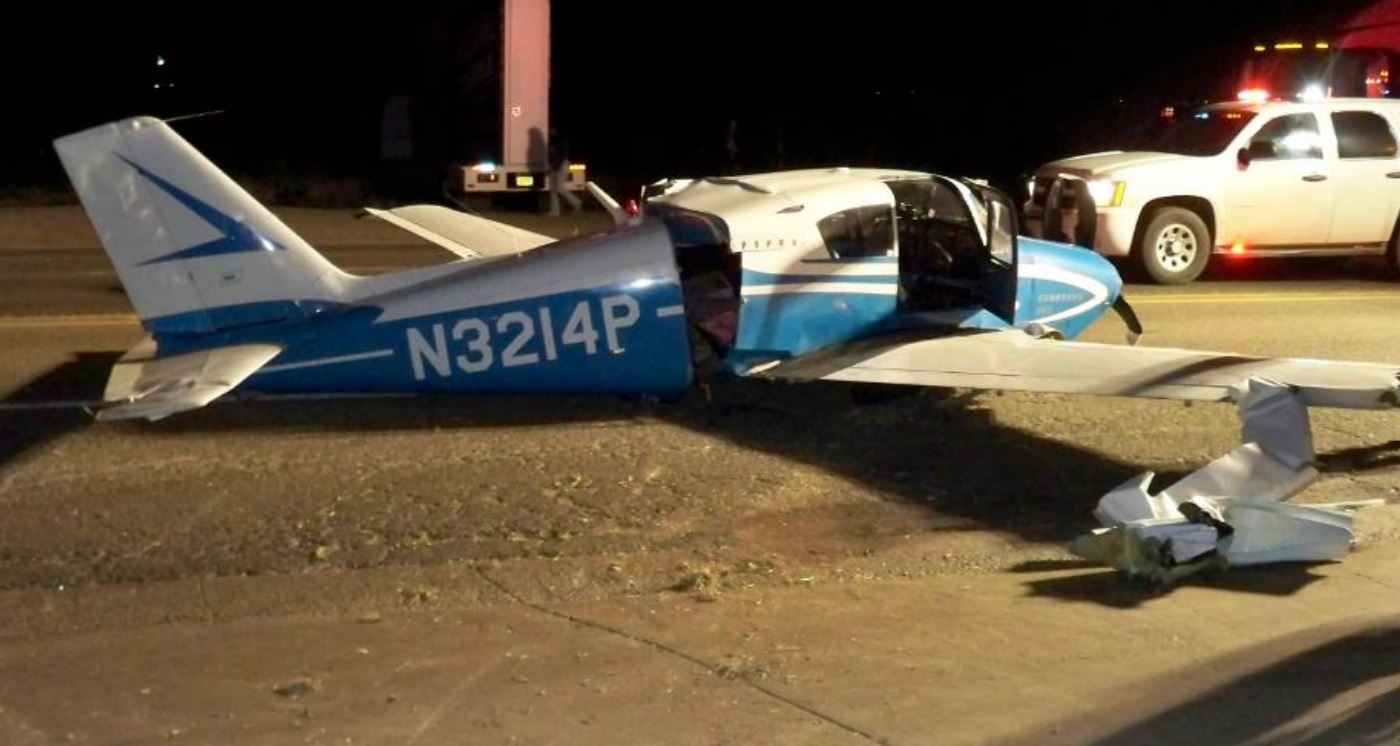
ASN Wikibase Occurrence # 217334
This information is added by users of ASN. Neither ASN nor the Flight Safety Foundation are responsible for the completeness or correctness of this information.
If you feel this information is incomplete or incorrect, you can submit corrected information.
| Date: | Monday 5 November 2018 |
| Time: | 16:55 |
| Type: |  Piper PA-24-250 Comanche |
| Owner/operator: | Private |
| Registration: | N3214P |
| MSN: | 24-292 |
| Year of manufacture: | 1958 |
| Total airframe hrs: | 3433 hours |
| Engine model: | Lycoming O-540-A1A5 |
| Fatalities: | Fatalities: 0 / Occupants: 4 |
| Aircraft damage: | Substantial |
| Category: | Accident |
| Location: | Texico, SE of Clovis Municipal Airport (KCVN), Clovis, NM -
 United States of America United States of America
|
| Phase: | Landing |
| Nature: | Private |
| Departure airport: | Austin Executive Airport, TX (KEDC) |
| Clovis Municipal Airport, NM (CVN/KCVN) | |
| Investigating agency: | NTSB |
| Confidence Rating: |
The pilot reported that, the day before the accident flight, he had fully refueled the airplane’s fuel tanks (60 gallons of fuel), conducted a run-up of the engine, and conducted a local flight around the pattern to troubleshoot an electrical issue that was later resolved.
The pilot reported that, on the day of the accident, during the preflight inspection for the cross-country flight, the airplane was only "two gallons shy of full." About 2.5 hours into the flight, after switching the fuel tanks multiple times en route, he switched to the left main fuel tank to prepare for landing. He added that, about 4 miles south of the destination airport, the engine lost power, the airplane was "too low," and he set up to land on a nearby road. The airplane landed with the gear retracted and struck multiple signs before coming to rest.
The airplane sustained substantial damage to the right wing, fuselage, and empennage.
During a postaccident examination by a Federal Aviation Administration inspector, both fuel tanks were found empty, and no evidence of fuel leakage was found at the accident site.
During a telephone conversation, the pilot reported that the total flight time the day of the accident was about 3.1 hours and that he was not aware of any preaccident mechanical failures. He estimated that the fuel burn was about 14 gallons per hour and that, during the accident flight, there was about a 17-knot headwind.
The Pilot’s Operating Handbook for the airplane stated that, while at 75% power, the airplane has about 3.7 hours of fuel endurance. Given the evidence, it is likely that the pilot did not ensure that there was adequate fuel onboard for the accident flight, which led to fuel exhaustion and a total loss of engine power.
Probable Cause: The pilot's improper preflight fuel planning, which resulted in fuel exhaustion and a total loss of engine power.
Accident investigation:
 |
|
Sources:
NTSB
https://flightaware.com/live/flight/N3214P
FAA register: https://registry.faa.gov/aircraftinquiry/NNum_Results.aspx?NNumbertxt=3214P%20
Location
Images:

Photo: FAA
Revision history:
| Date/time | Contributor | Updates |
|---|---|---|
| 06-Nov-2018 06:53 | Geno | Added |
| 15-Jun-2019 16:19 | ASN Update Bot | Updated [Time, Operator, Total occupants, Nature, Departure airport, Destination airport, Source, Narrative, Accident report, ] |
| 15-Jun-2019 16:43 | harro | Updated [Departure airport, Destination airport, Source, Narrative, Photo] |
Corrections or additions? ... Edit this accident description
The Aviation Safety Network is an exclusive service provided by:


 ©2024 Flight Safety Foundation
©2024 Flight Safety Foundation